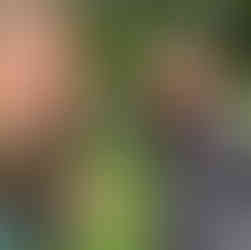A LIFE ON THE RIVER VII ~ Trout & Salmon Magazine
- northernfishingschool

- Nov 9, 2020
- 3 min read

Marina Gibson describes her year fishing in Yorkshire. The brown trout are being picky and the TV cameras are about to roll.
THE SALMON CATCHES ON THE URE from the end of July to mid-August have been few and far between but the trout fishing has been consistently good, particularly beneath the surface using weighted nymphs, jigs, gold-heads and North Country spiders. One day I received a message from fellow guide Beni saying: “I’m so upset, I’ve just lost the biggest brown trout I’ve ever seen on the Ure — it had a huge head and it must have weighed more than 3lb — the one that got away.” I really enjoy reading the comments in our shing book, which lives in the hut at Nutwith. On July 11, a guest filled in the gaps with a 13lb coloured cock fish from Madge’s pool and the visitor before him caught a 11⁄2lb wild brownie on a Red Butt double. He also saw fresh salmon jumping in Roman Ford pool — I imagine the adrenaline was flowing.
I haven’t witnessed a trout feeding frenzy on the surface for a while now. I was instructing on the top beat at Swinton when at 3pm large dark olives in their hundreds started filling the air and in the early evening there was a sedge hatch. At one point there were so many flies scooting around that they looked like bumper cars trying to dodge each other. I was shocked that I didn’t see a single trout rise in the area during this glorious moment and couldn’t understand why they weren’t being more receptive these flies were handing it to them on a plate. Because the action on top hasn’t been prolific, we’ve frequently used the klink-and-dink method, also known as the duo or New Zealand style. It’s a fantastic way of covering the water and we’ve found it to be a successful method for beginners because the dry-fly acts as a clearly visible indicator when a sh takes the nymph. The fish can either take the surface fly (the klink), which can be any buoyant emerger or dry-fly pattern, or the subsurface fly (the dink), any of various weighted or unweighted nymphs. As soon as the klink twitches or goes under, it’s time to strike and it’s important to concentrate at all times because if you’re too slow it’s likely that you won’t connect with the fish in time.
Elsewhere on the estate, Home Lake, adjacent to The Swinton Hotel, has been dredged and we are waiting for it to fill with water so we can stock it with trout. The water is spring fed and runs into the River Burn. At this time of year, if you’re lucky you will see the fallow deer roaming around the banks with their young.
I hosted a migratory fishing course on the River Tyne with James Stokoe and Andrew Jackson at the end of July. We were blessed with a talented group of casters and two of them were rewarded with sea-trout. I was lucky enough to share a very special moment with Richard Collett and his great fishing friend Jonny when he caught a sea-trout on a fly that his father had tied. BBC Country File came to film with us in mid- August. I took presenter Anita Rani fishing on the River Burn, then on to Leighton Reservoir to catch a rainbow trout to cook in The Swinton Hotel’s cookery school with chef Marc Williams. It will be broadcast on September 6.
ABOVE AND BELOW
My klink-and-dink set-up usually consists of a floating line and 9ft tapered leader (4X or 5X, depending on the average size of fish). On the end I tie a dry-fly and then knot 2.5ft-4ft of tippet to its bend (some specialist hooks are made with a rear eye — pictured). I then tie a nymph (the dink) to the tippet. I vary the size of the nymph depending on the flow of water and I will change the tippet length between the dry- fly and the nymph depending on the water depth. Another ploy to try when trout are taking minuscule flies and you’re losing sight of the one you’re presenting is to position a second, larger dry-fly around 20in away from it to act as a dry dropper. You could use a Klinkhamer with a colourful post, a Stimulator, foam emerger or Elk Hair Caddis. A trout may take the larger dry-fly but if it takes the smaller one your eyes will be in the right place and you’ll know it’s taken something near to the larger one, in which case it’s time to strike...










Comments